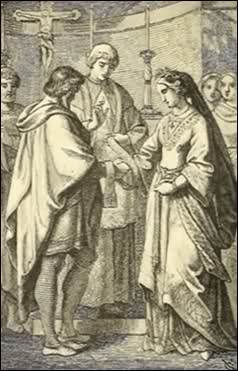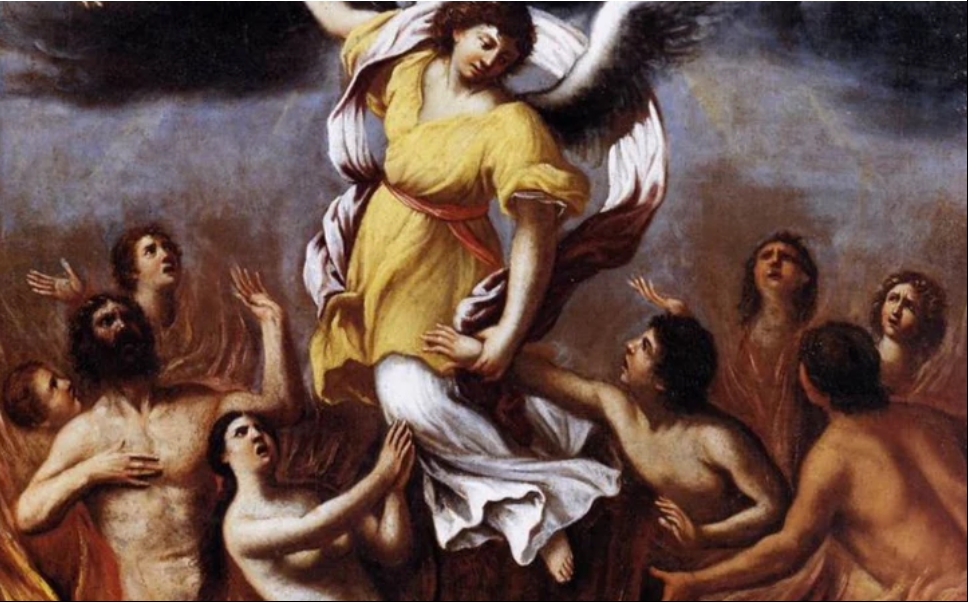Catholic Sisters and the American Civil War
In Washington, D.C., across from St. Matthew’s Cathedral (the site of President John F. Kennedy’s funeral Mass), a monument stands to the women religious who ministered to wounded and dying soldiers, North and South, during the American Civil War. Unveiled on September 20, 1924, the inscription reads:
They comforted the dying, nursed the wounded, carried hope to the imprisoned, gave in his name a drink of water to the thirsty –
To the memory and in honor of the various orders of Sisters who gave their services as nurses on battlefields and in hospitals during the Civil War.
Between 1861 and 1865, approximately 640 women from twenty-one different religious communities volunteered their nursing services. Mary Livermore, a future women’s rights leader who worked with the U.S. Sanitary Commission, said:
I am neither a Catholic, nor an advocate of the monastic institutions of that church . . . But I can never forget my experience during the War of the Rebellion . . . Never did I meet these Catholic sisters in hospitals, on transports, or hospital steamers, without observing their devotion, faithfulness, and unobtrusiveness. They gave themselves no airs of superiority or holiness, shirked no duty, sought no easy place, bred no mischiefs. Sick and wounded men watched for their entrance into the wards at morning, and looked a regretful farewell when they departed at night.
This was quite a change. Before the Civil War, nuns often didn’t wear habits in public or when traveling, because of anti-Catholic hostility. In Indiana, children threw rocks at them. In New England, anti-Catholic mobs threatened to burn down their convents (and sometimes actually did). And in New York, a man walked up to a Sister in habit, called her a “damned papist bitch,” and slapped her face.
But when the war came, they were desperately needed. In general, nursing wasn’t considered a respectable profession for women. Nor were there many hospitals; most people were cared for at home. The exceptions here were the Sisters, who operated twenty-eight hospitals nationwide as of 1861. While other churches had women nurses, including the Lutherans and Episcopalians, Catholic nuns constituted the single largest pool of experienced nurses in America on the eve of the Civil War.
Altogether on both sides, over 4,000 women served as nurses; more served as nurses’ assistants, cooks, and laundresses. What did the nurses do? They cleaned wounds and bandaged them, helped doctors in surgery, and cleaned the wound. It wasn’t easy work, and the turnover rate was high. All in all, it was hard, ugly work.
The turnover rate may have been less for the Sisters. For centuries, historian George Stewart writes, nursing was a “religious ministry rather than a profession.” One Sister, asked how she gathered strength to do her work, said: “I thought of the cruel wound in the side of our dear Lord, and my strength was restored.” And they asked little remuneration beyond necessities.
They were there on the war’s bloodiest battlefields. At Shiloh, where some 25,000 fell, Sister Anthony O’ Connell, a Cincinnati-based Sister of Charity, said she was unable to bear the terrific stench from the bodies on the battlefield. This was bad enough, but what we endured on the field of battle while gathering up the wounded is beyond description . . . Day often dawned on us only to renew the work of the preceding day without a moment’s rest.
One soldier said of Sister Anthony:
Amid this sea of blood she performed the most revolting duties for these poor soldiers. She seemed like a ministering angel, and many a young soldier owes his life to her care and charity. Happy was the soldier who, wounded and bleeding, had her near him to whisper words of consolation and courage. She was reverenced by Blue and Gray, Protestant and Catholic alike; and we conferred on her the title of the ‘Florence Nightingale of America.’ Her name became a household word in every section of the North and South.
When surgeons wanted to amputate a soldier’s limb, she would say: “Wait and let me see what I can do for him.” And she often saved it. In 1897, she was buried with a full military honor guard.
In some quarters, however, particularly among Protestant nurses, prejudice still lingered. One woman, describing the Sisters’ habit, said: “What looking objects to wait upon our sick and dying boys!” Dorothea Dix, the Superintendent of U.S. Army nurses, was said to be particularly hostile to Catholics. Part of the reason for this hostility may have been just plain jealousy.
The Sisters evangelized by their example. In many places, they were the first nuns, let alone Catholics, that some soldiers had ever seen. A Confederate Chaplain recalled one incident where they unwittingly won over non-Catholics. One soldier, raised on anti-Catholicism, didn’t realize the Sisters were Catholic:
“Sister, is it true that you belong to the Catholic Church?”
“Yes, sir, it’s true. And that’s the source of the greatest happiness I have in this life.”
“Well, I declare. I’d never have suspected it. I’ve heard so many things . . . I thought Catholics were the worst people on earth.”
“I hope you don’t think so now.”
“Well, Sister . . . I’ll tell you. If you say you’re a Catholic, I’ll certainly have a better opinion of Catholics from now on.”
Having recently celebrated Memorial Day, it’s important to remember the women as well as the men who have sacrificed for their country. Through their healing ministry, the Catholic Sisters helped dissolve prejudice, preached by quiet example, and helped make nursing a respectable profession for women from all walks of life. Theirs is an inspiring story that deserves to be remembered and cherished by all Americans.
The Orwellian Logic Behind Abortion and Population Control

A recent Associated Press story on the work of the ASPCA had this to say:
It took years of campaigning to change thinking about sterilizing pets, but it has paid off. This year fewer than 4 million unwanted dogs and cats will be euthanized, down from as many as 20 million before 1970.
There are several reasons: Aggressive adopt-a-pet campaigns are carried out every day in cities all over the country and breed rescues save many dogs. But animal experts believe spaying and neutering has played the biggest role in saving so many lives.
James Taranto of the Wall Street Journal correctly calls this out as eerily Orwellian:
Did you catch that “saving so many lives”? True, fewer animals were put to death, but that’s because they weren’t born in the first place. By this logic, hunting a species to extinction “saves lives” because it prevents any more of the species from being killed.
This sort of deceptive language is commonly deployed on behalf of totalitarian regimes to conceal their brutality to human beings. It’s fascinating to see it used in this context, where the moral stakes are so much lower.
Exactly. It’s a classic case of a warped “destroy the town to save it” mentality. The ASPCA is saving the animals lives by preventing them from being alive. What’s far more disturbing is that the ASPCA’s Orwellian language of animal control is often used against unborn humans, in two inter-related debates: population control (which even has an ominous name), and abortion.
Abortion
Pro-Choice Action Network crows about “the tremendous benefit to society of ensuring that every child is a wanted child.” But abortion doesn’t magically make children suddenly become wanted. What they’re really saying is that they’ll prevent “unwanted” children from being born. Unlike ASPCA, they don’t stop reproduction before conception, so their real message is that if all the unwanted children would die, children would be happier. You might as well suggest raising the per capita income by killing the poor.
Of course, these pro-choice mantras about wanted and unwanted children are false: many women abort children they want but feel they can’t keep, due to pressures from their finances, families, or the fathers of the baby; and of course, an untold number of children who reach childbirth are abused or treated as if they’re unwanted by their families. Two things should be noted about this. First, many of those children grow up into happy and well-adjusted adults – a lousy childhood is a terrible shame, but it’s generally not the final chapter. Second, abortion actually makes this problem dramatically worse, not better.
We can see this most acutely in the realm of children with disabilities. Right now, the statistics for the unborn disabled are disturbing: over 90% of those children who are identified as having Down’s Syndrome while they’re still in the womb will be aborted, and the statistics aren’t much better for a number of other mental or physical disabilities. What message, exactly, does this send (on behalf of both parents and society) to those children who are born with Down’s Syndrome, or to those physically- and emotionally-healthy children who suffer some sort of childhood accident, and become disabled? If you’re aware that your sibling was killed by abortion for being disabled, and then you become disabled, who wouldn’t feel like an “unwanted child”?
The fact is, abortion perpetuates a mentality which treats children like commodities. If you don’t like the hand you’ve been dealt, get an abortion and try again. It’s this mentality which creates a culture increasingly hostile to children, and it’s no mystery why, even as society has become more economically enriched and technologically advanced, we’ve become increasingly barbaric towards the vulnerable. If we could just eliminate the undesirable members of our society, every citizen would be a wanted citizen, right?
Population Control
On the population control front, the parallel is obvious. Not only do the two groups use identical language about controlling population sizes, but many of the more famous would-be population controllers have backgrounds in biology (Population Bomb author Paul Ehrlich) or environmental sciences (Club of Rome’s founder Alexander King, Limits to Growth author Donella Meadows, etc.), and have approached the idea of controlling humans as if we’re simply another animal.
Here’s how Paul Ehrlich begins Population Bomb:
I have understood the population explosion intellectually for a long time. I came to understand it emotionally one stinking hot night in Delhi a few years ago. My wife and daughter and I were returning to our hotel in an ancient taxi. The seats were hopping with fleas. The only functional gear was third. As we crawled through the city, we entered a crowded slum area. The temperature was well over 100, and the air was a haze of dust and smoke. The streets seemed alive with people. People eating, people washing, people sleeping. People visiting, arguing, and screaming. People thrusting their hands through the taxi window, begging. People defecating and urinating. People clinging to buses. People herding animals. People, people, people, people. As we moved slowly through the mob, hand horn squawking, the dust, noise, heat, and cooking fires gave the scene a hellish aspect. Would we ever get to our hotel? All three of us were, frankly, frightened. It seemed that anything could happen – but, of course, nothing did.
If you didn’t already know that this book was about population control, you could hardly be criticized for expecting that the author was some sort of racist or xenophobe, talking about how disgusting and scary he finds the people of the Third World. And frankly, you wouldn’t really be wrong.
Ehrlich didn’t think that the problem with the world was that there were too many Ehrlichs — that his wife or his daughter simply put too much strain on the Earth to be allowed to live — but that there were too many beggars, paupers, and Indians. Of course, the absurdity is that the natural resources being used by the Ehrlichs (for example, in flying a family of three from the United States to India, and staying at a hotel) dwarf what the average Indian was using, and natural resources, after all, were what Ehrlich claimed to be worried about.
Like the other examples discussed above, Ehrlich was quick to employ the Orwellian claim that he was wanting this for India. It was our moral responsibility to make sure that fewer Indians were poor. Earlier, I remarked that you “might as well suggest raising the per capita income by killing the poor.” Ehrlich drains that claim of any irony — that’s his actual proposal. Widespread abortions, along with birth control and sterilization of the poor, were all part of his plan (and still are). Here’s how he presents this as a sort of charity:
Old India hands will laugh at our reaction. We were just some overprivileged tourists, unaccustomed to the sights and sounds of India. Perhaps, but the problems of Delhi and Calcutta are our problems too. Americans have helped to create them; we help to prevent their solution. We must all learn to identify with the plight of our less fortunate fellows on Spaceship Earth if we are to help both them and ourselves to survive.
So we should prevent poor children from being poor … by preventing poor children from being, period. By this logic, bringing humanity to extinction helps “both them and ourselves to survive” because it prevents any more of the humans from being killed (or worse, poor).
http://catholicdefense.blogspot.com/2011/07/orwellian-logic-behind-abortion-and.html
Global Warming as a Substitute Religion
 In these days we are accused of attacking science because we want it to be scientific. Surely there is not any undue disrespect to our doctor in saying that he is our doctor, not our priest, or our wife, or ourself. It is not the business of the doctor to say that we must go to a watering-place; it is his affair to say that certain results of health will follow if we do go to a watering-place. After that, obviously, it is for us to judge. Physical science is like simple addition: it is either infallible or it is false. To mix science up with philosophy is only to produce a philosophy that has lost all its ideal value and a science that has lost all its practical value. G. K. Chesterton
In these days we are accused of attacking science because we want it to be scientific. Surely there is not any undue disrespect to our doctor in saying that he is our doctor, not our priest, or our wife, or ourself. It is not the business of the doctor to say that we must go to a watering-place; it is his affair to say that certain results of health will follow if we do go to a watering-place. After that, obviously, it is for us to judge. Physical science is like simple addition: it is either infallible or it is false. To mix science up with philosophy is only to produce a philosophy that has lost all its ideal value and a science that has lost all its practical value. G. K. Chesterton
One of the more pernicious follies of our time is the mixing of politics, science and religion. The Global Warming scam is a prime example of what a noxious brew can result from this. Among many of the elites in Western society, environmentalism has taken on all the aspects of a religion. The religious left has been eager to climb on to this new religion. Based upon very dubious science, and fired with the faith that has traditionally been given to religion, powerful forces throughout the West are eager to implement revolutionary changes in our society, most involving a radical expansion of government control over industry. Western civilization has made great strides by developing an intellectual atmosphere of relative freedom that has allowed science to flourish. Today science is often being debased by charlatans and zealots who use junk science as a tool to attempt to win policy debates. There is nothing new about politicians attempting to use dubious science to push their cherished nostrums. What is new is that such a large number of the elites in our society, (academics, politicians, entertainers, media, etc.) are participants in an intellectual groupthink that finds it next to impossible to tolerate, let alone listen to, dissenting viewpoints. What passes for the mainstream media today is a prime example of this type of bias. Thank heavens for a rambunctious new media: talk radio and the internet, where ideological conformity is impossible to enforce. That is all to the good, since some of the more deranged acolytes of the Global Warming religion appear to have a rather intolerant attitude towards heretics.
http://the-american-catholic.com/2011/07/11/global-warming-hysteria-explained-2/













































